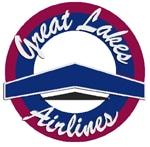
Author: matrixsuperadmin

The grants will be awarded to Operation Lifesaver organizations in California, Georgia, Idaho, Illinois, Indiana, Michigan, Minnesota, Ohio, Oregon, South Carolina, Texas, Utah and Wisconsin. These state programs will use the funding to spread “See Tracks? Think Train!” safety messages via television, radio, billboards, sporting events and movie theatre advertising; create eye-catching displays for public education at large events; and target students, school bus drivers, Spanish-speaking populations and the news media to raise awareness about the dangers near tracks and trains.
“The grants will fund a wide variety of projects to expand the reach of our ongoing safety campaign and further Operation Lifesaver’s mission of eliminating collisions, injuries and deaths at crossings and along rail property,” said Joyce Rose, OLI’s president and CEO. “Through our partnership with the Federal Highway Administration, these grade crossing safety education activities will help us reach critical audiences in many of the states where these incidents are most prevalent.”
The Federal Highway Administration, a national partner and advisor of Operation Lifesaver, provides the funding for this new grant program, which complements similar grant programs with the Federal Railroad Administration and Federal Transit Administration.
“Our rail safety partnership with Operation Lifesaver is very important to FHWA, and we are proud to be a part of the “See Tracks? Think Train!” educational campaign. Safety is our number one priority at FHWA,” said Federal Highway Administrator Greg Nadeau.
Projects funded by the FHWA grants include:
- California Operation Lifesaver will initiate a campaign with billboard and bus advertisements featuring the “See Tracks? Think Train!” safety message in key locations in Fresno, Kings, Los Angeles and San Bernardino counties during September, which has been designated Rail Safety Month across the state.
- Operation Lifesaver Georgia will air the “See Tracks? Think Train!” radio and television public service announcements (PSAs) throughout the state.
- Illinois will work with Metra Commuter Rail to place “See Tracks? Think Train!” banners on the outside of commuter rail cars and on electronic signs in the Ogilvie Transportation Center in Chicago.
- Indiana will target communities along the Jeffersonville to Indianapolis rail corridor with outreach to schools, truck driver and driver education organizations, “See Tracks? Think Train!” radio PSAs on iHeart Radio stations, signage at crossings, and law enforcement safety blitzes.
- Michigan’s project involves creating and distributing a booklet detailing crossing safety laws, including the “See Tracks? Think Train!” graphics and message, to law enforcement agencies, judges and prosecutors across the state.
- Minnesota plans a multi-faceted approach that will incorporate “See Tracks? Think Train!” PSAs and messages at the Minnesota Transportation Museum in St. Paul, the North Shore Scenic Railroad in Duluth, the Minnesota State Fair, and at an event with the Minnesota Towards Zero Deaths Coalition, among other venues.
- Ohio will conduct targeted “See Tracks? Think Train!” billboard, online and radio advertising in communities along rail corridors experiencing increased freight rail traffic.
- Oregon will reach professional truck drivers by distributing safety brochures and visor cards through the state’s Department of Transportation; in addition, they will air radio and television PSAs on Spanish language stations across the state.
- South Carolina will target schools throughout the state in close proximity to train tracks with a plan to distribute “See Tracks? Think Train!” materials and PSAs to students and school activity bus drivers.
- Texas will conduct a 60-day digital truck stop ad campaign at truck stops targeting CDL drivers of tractor-trailers and large trucks along Texas freight corridors in the South and Southeast.
- Utah will purchase “See Tracks? Think Train!” TV and movie theater ads to combat dangerous driver behavior at railroad crossings, and distribute posters to school districts and trucking companies.
- Wisconsin conducted a statewide Rail Safety Week effort using the “See Tracks? Think Train!” radio and billboard ads that included safety blitzes, social media and other events.
The 13 approved grants were awarded through a competitive process. Selections were made by a panel of safety experts using criteria including successfully leveraging the federal funds with private partnerships, targeted messaging and frequency of highway-rail collisions.
Operation Lifesaver plans to announce the results of a similar grant program for rail transit safety education projects this fall.

The evaluation was done by the Washington State Department of Transportation and the Washington State University Freight Policy Transportation Institute at the request of the Legislature. The final result, the Washington State Short Line Rail Inventory and Needs Assessment, was released in late June.
Many of the state’s 29 short line railroads are local and serve farmers in agricultural and timber-growing communities by hauling their products to larger railroads. The study found that more than 55 percent (740) miles of all short line track miles within the state are not able to efficiently handle the 286,000-pound rail cars used in modern freight transport. That means trains have to go slower on the lines, cause more wear and cost more to operate.
Capacity for heavier rail cars is important because products often move from short line rails to larger rail systems to reach national and global markets. Because they’ve been neglected for many years, bringing the lines up to modern standards could cost more than $600 million, the study determined.
The study also highlighted the benefits of short line railroads. In addition to getting goods to market, the rail lines help cut down on roadway congestion and highway wear and tear. As an example of savings from short line railroads, the study found that the Tacoma Rail alone generates public benefits in excess of $11 million annually in addition to cost savings to businesses and shippers. Public benefits include increased safety due to reduced truck trips in addition to less wear and tear on roads.
Study findings can be used by lawmakers and others to plan for future rail investments as well as exploring funding sources. Recently, the Washington Legislature passed, and Gov. Jay Inslee signed, a new revenue package which included over $107 million for statewide freight rail track improvements. The funding includes $47 million for the state-owned short line rail system and $31 million for the Freight Rail Assistance Program, which supports economic development and rail preservation initiatives.

A small plane was also forced to change direction to avoid a drone in southern New Jersey on Sunday.
Aviation experts said such incidents present a clear safety concern that warrants more attention amid growing interest in unmanned aircraft systems, or drones. The Consumer Electronics Association, a technology trade group, expect unit sales of drones to approach 700,000 in 2015, a 63 percent increase over last year.
Read more from NJ.com.

Prosecutors in Miller County, Ark., formally charged Jeffrey Duane Procella, 39, last week in theft of metal and felony criminal mischief in the removal of signal wire from a Union Pacific Corp. railroad track in Texarkana.
When signal wire is damaged, the flow of critical railroad information is disrupted. Malfunctioning signals have the potential to cause a train wreck.
Read more from Northwest Arkansas Democrat Gazette.

A news conference featuring state lawmakers from college towns along the rails praised Rauner for wanting to tackle the budget deficit but pointed out the Amtrak subsidy, which Rauner wants to cut by 40 percent, comes from a fuel tax and not from the general revenue fund. Besides, they say, the trains are an economic engine.
Read more from RiverBender.com.

Read more from The Daily Courier.
Pilots and flight attendants of Great Lakes Airlines are members of SMART TD Local 40 of Denver.

Christie (R) while campaigning for the Republican Presidential nomination in New Hampshire July 28, said that his staff is working with Foxx’s counterparts for a meeting date. Cuomo (D) the same day said that he too will join Christie and Foxx, added that the federal government must chip in more than the $3 billion Uncle Sam has first offered to fund Gateway’s estimated $12 billion cost.
“If the federal government can make a significant contribution,” said Cuomo in a Tuesday interview, “then let’s go. I mean we have shovels – we need it.”
Read more from Local Talk News.

Service under the new agreements began yesterday. As the route’s operator, Amtrak will work with host railroads, provide train and engine crews and manage ticket reservations. INDOT will pay Amtrak for its expenses not covered by ticket revenue, and Amtrak will provide the state with any excess revenue.
Read more from Progressive Railroading.

The program integrity initiatives pertaining to Railroad Medicare include:
Medically Unlikely Edits (MUEs) – These are systematic checks that look for claims that exceed the maximum number of services expected to be reported, in most cases, for a single patient by the same provider on a single day.
National Correct Coding Initiative (NCCI) Edits – These are also systematic checks, and they look for combinations of codes that should not be reported together in all or most situations. Either we would not expect both services to occur in one treatment, or Medicare does not reimburse both services when performed together. This could be two codes that represent different methods of performing the same service, such as a laparoscopic gallbladder removal and an open incision gallbladder removal. It could also be two codes that are components of each other, such as a rhythm electrocardiograph (ECG) and a cardiovascular stress test, which by definition includes an ECG.
Medical Review Program – This initiative involves complex reviews by Medicare (including Railroad Medicare) in which documentation is requested, and then the reviews determine if the claim was correctly billed and properly documented, and that the services meet Medicare coverage criteria.
Comprehensive Error Rate Testing (CERT) Program – This initiative involves complex reviews in the same manner as the Medical Review program. External entities include the CERT Review Contractor, the CERT Documentation Contractor, and the CERT Statistical Contractor, and they work together to review a random sample of claims and determine an error rate for local Medicare, as well as Railroad Medicare. They do this by:
- Requesting medical records from providers who submitted claims
- Reviewing claims and medical records for compliance with Medicare coverage, coding and billing rules
The CERT program calculates an improper payment rate, and it also develops an improper payment rate by claim type, to measure Medicare (and Railroad Medicare’s) performance processing claims correctly.
Working together, these initiatives reduce the number of claims that are underpaid, overpaid or should never have been paid.
If you have any questions about your Railroad Medicare coverage, please call Palmetto’s Beneficiary Contact Center at 800-833-4455, Monday through Friday, from 8:30 a.m. to 7 p.m. ET. Members can sign up for email updates. To do so, visit Palmetto’s website at www.PalmettoGBA.com/RR/Me and click ‘Email Updates’ on the top of the webpage to start the process.
Visit Palmetto’s Facebook page at www.Facebook.com/MyRRMedicare.